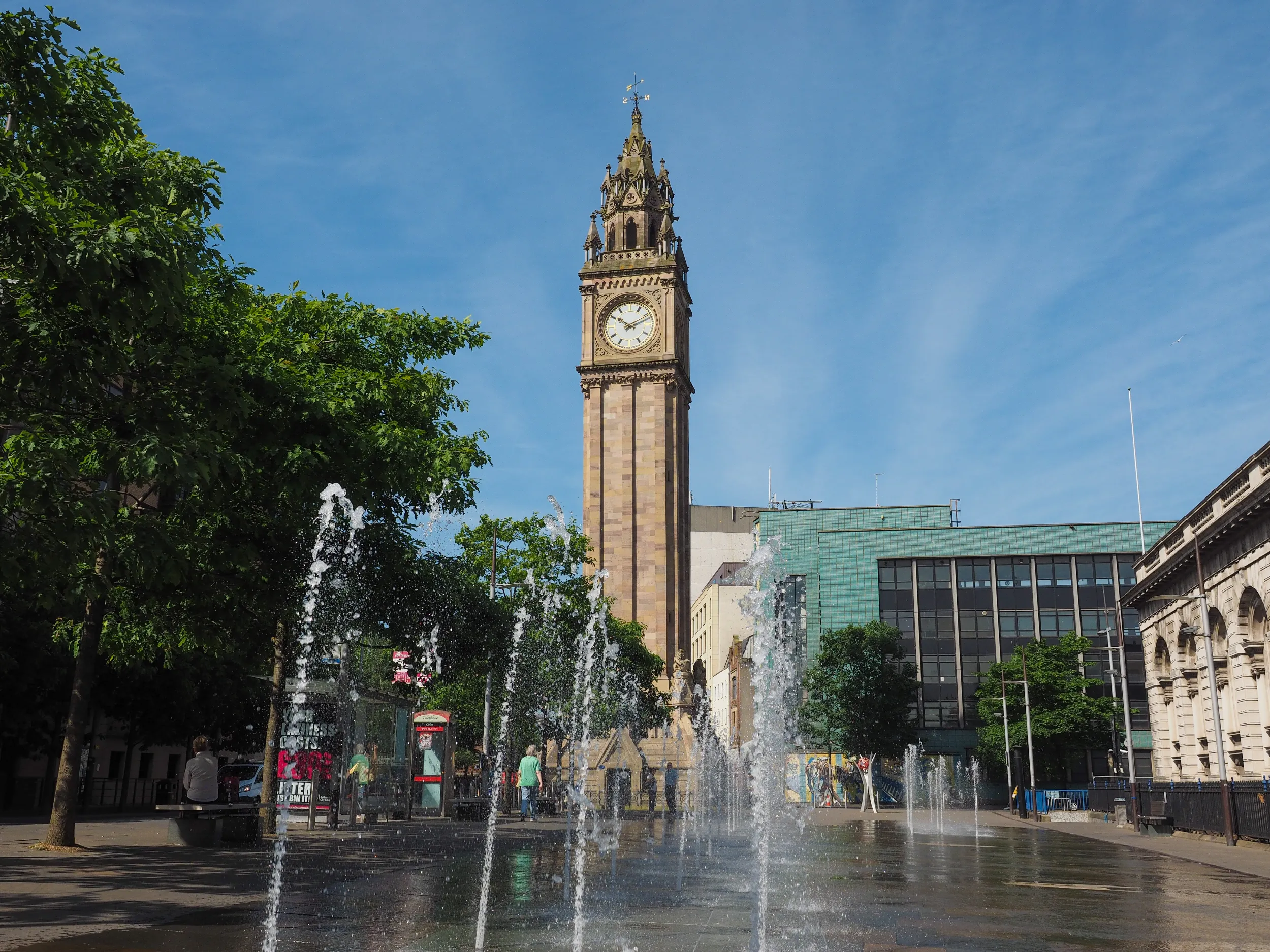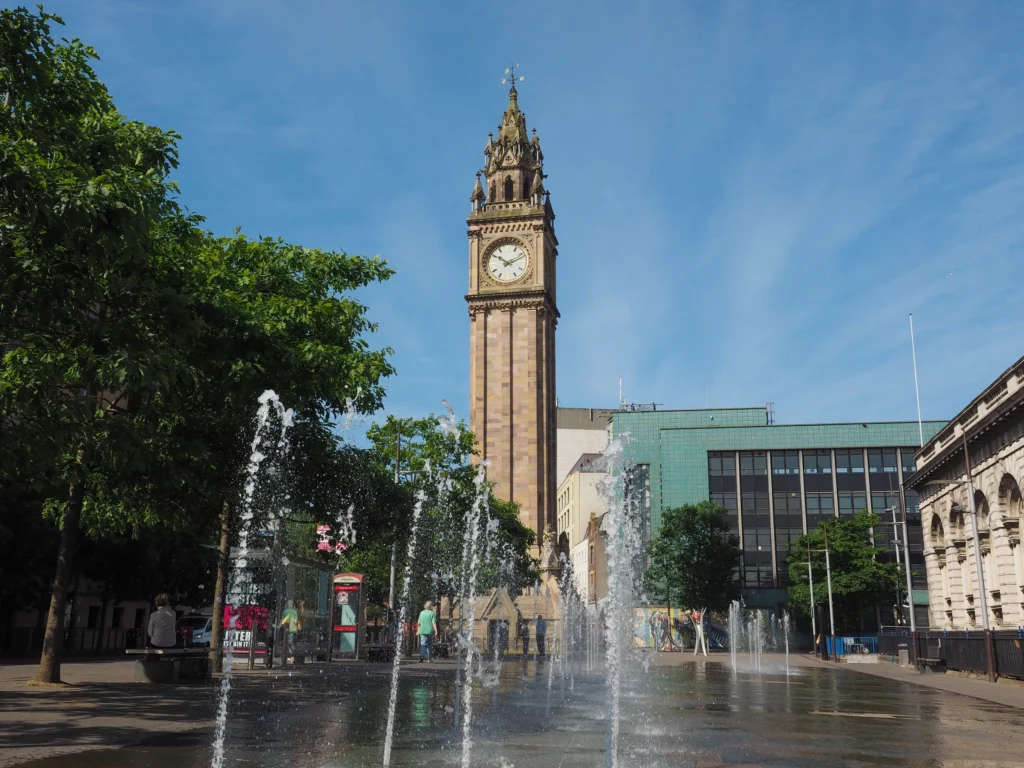360 Degree Video of Albert Clock, Belfast

Updated On: April 07, 2024 by Yomna Salah
In modern times, seeing skyscrapers and buildings reaching the sky is perfectly normal. They became ordinary structures at this time. On the other hand, it was a magnificent phenomenon in the past. Towers were so captivating, although they were found in many countries. This 360-degree video features the amazing scenery of The Albert Memorial Clock. It is a clock tower in Northern Ireland- in Queen’s Square in Belfast. This tower has been around since the 19th century, becoming a remarkable city landmark. It may look a bit similar to the famous clock of Big Ben, but it has a whole different history.
History of the Albert Memorial Clock

It is commonly known as the Albert Clock. The tower came into being thanks to a competition in 1865. That competition was for designing a memorial to Prince Albert- the late Prince Consort of Queen Victoria. W. J. Barre was the winner of that competition; he also happened to design Belfast’s Ulster Hall earlier. Although Barre won first place in the competition, he was not awarded. Instead, those in second place secretly tool the prize until a public uproar made its way to the matter. Afterwards, Barre eventually received his award, and the construction began. The completion of the Albert Clock has finally taken place in 1869.
A Beacon of Resilience
The Albert Clock has witnessed significant moments in Belfast’s history, including periods of prosperity, conflict, and renewal. During the industrial boom of the late 19th century, the clock tower served as a symbol of Belfast’s economic prowess, standing amidst bustling streets lined with textile mills, shipyards, and warehouses.
However, the clock’s resilience was tested during the turbulent years of the 20th century, marked by political unrest and sectarian violence. In 1941, during the Belfast Blitz of World War II, the clock tower sustained damage from German bombing raids, losing a portion of its crown and facing the threat of demolition. Yet, like the city it represents, the Albert Clock emerged from adversity with grit, undergoing restoration efforts to preserve its architectural integrity and historical significance.
The Beginning of the Construction
Fitzpatrick Brothers Builders were the ones to start the construction of the Albert Clock back in 1865. The clock style is Gothic and mixes French and Italian. Albert Clock stands on wooden piles on land around the River Farset. Above and beyond, the tower’s base displays floating ramparts and lions. On the western side of the tower, you can find a statue of the Prince standing. SF Lynn was the designer who created this sculpture. Francis Moore of High Street was the one who built the clock built into the tower.
Albert Clock through the Years
When the tower was first erected, it had a notorious reputation for being frequently visited by prostitutes. That’s because the docks were close to the clock, so prostitutes had a way with the sailors who visited the area. However, that did not last until modern times due to developments. The surrounding Queen’s Square and Custom’s House Square were turned into modern public spaces. This area is now a total of fountains, sculptures, and trees.
However, things have gone downward since 1992. In January 1992, a bomb explosion by a Provisional Irish Republican Army damaged the clock. Besides, heavy passing traffic and other elements worsened the damage. However, a restoration project repaired the damage and was back to normal in 2002. The restoration made the wooden bases and the foundation much stronger. They even replaced the decaying parts, cleaned the entire tower, and made it better than it was.
Cultural Icon and Tourist Attraction
Today, the Albert Clock is one of Belfast’s most cherished landmarks, drawing visitors worldwide to marvel at its grandeur and learn about its captivating history. Its central location in the city centre makes it easily accessible to tourists exploring Belfast’s vibrant streets, adjacent to popular attractions such as Custom House Square and the Titanic Belfast Museum.
Guided tours of the Albert Clock allow visitors to delve into its rich heritage, exploring its intricately decorated interior and ascending to the top for panoramic views of the surrounding cityscape. For many, a visit to the Albert Clock is an opportunity to admire its architectural beauty and gain insight into Belfast’s complex past and its journey towards reconciliation and peace.
Community Landmark and Symbol of Unity
Beyond its role as a tourist attraction, the Albert Clock holds profound significance for the people of Belfast, serving as a symbol of community pride and resilience. Over the years, it has become a focal point for civic events, cultural celebrations, and public gatherings, uniting residents from diverse backgrounds in a shared appreciation for their city’s heritage.
The clock’s enduring presence in Belfast’s collective consciousness is reflected in popular culture, with references appearing in literature, music, and art. Its image adorns postcards, souvenirs, and promotional materials, embodying the spirit of Belfast and evoking a sense of nostalgia among locals and expatriates.
Symbolism and Significance
Beyond its architectural beauty, the Albert Clock holds deep symbolic significance for the people of Belfast. As a memorial to Prince Albert, it represents the enduring bond between the United Kingdom and its territories, as well as the cultural and historical ties that bind them together.
Moreover, the clock serves as a poignant reminder of Belfast’s industrial heritage and its role as a bustling port city during the Victorian era. It stands as a testament to the ingenuity and ambition of the people who built it and their resilience in the face of challenges such as the tower’s structural instability.
Preserving Heritage for Future Generations
As Belfast continues to undergo urban redevelopment and modernization, preserving historical landmarks like the Albert Clock remains paramount. Efforts to maintain and protect the clock tower ensure that future generations can continue to admire its beauty and learn from its storied past.
Community-led initiatives, supported by local authorities and heritage organizations, are crucial in safeguarding the Albert Clock for posterity. Restoration projects, conservation efforts, and educational programs aim to foster a deeper appreciation for Belfast’s architectural legacy and the enduring value of its historic landmarks.
Legacy and Impact
As one of Belfast’s most iconic landmarks, the Albert Clock holds a special place in the hearts of its residents and visitors alike. Its lean may be a testament to its challenges over the years. Still, it also serves as a reminder of the city’s resilience and determination to overcome adversity.
Beyond its practical function as a timekeeping device, the Albert Clock symbolises Belfast’s rich history, cultural heritage, and enduring spirit. It stands as a beacon of hope and inspiration for future generations, reminding them of preserving the past while embracing the future.
Conclusion
In a city marked by resilience and renewal, the Albert Clock is a timeless symbol of Belfast’s past, present, and future. From its origins in the industrial age to its enduring legacy as a cultural icon, the clock tower embodies the spirit of a city that has overcome adversity with grace and determination.
As Belfast continues to evolve, the Albert Clock remains a reminder of the rich tapestry of history and heritage that defines the city’s identity. Whether admired by tourists or cherished by locals, its majestic presence serves as a beacon of hope, unity, and pride for all who call Belfast home.






